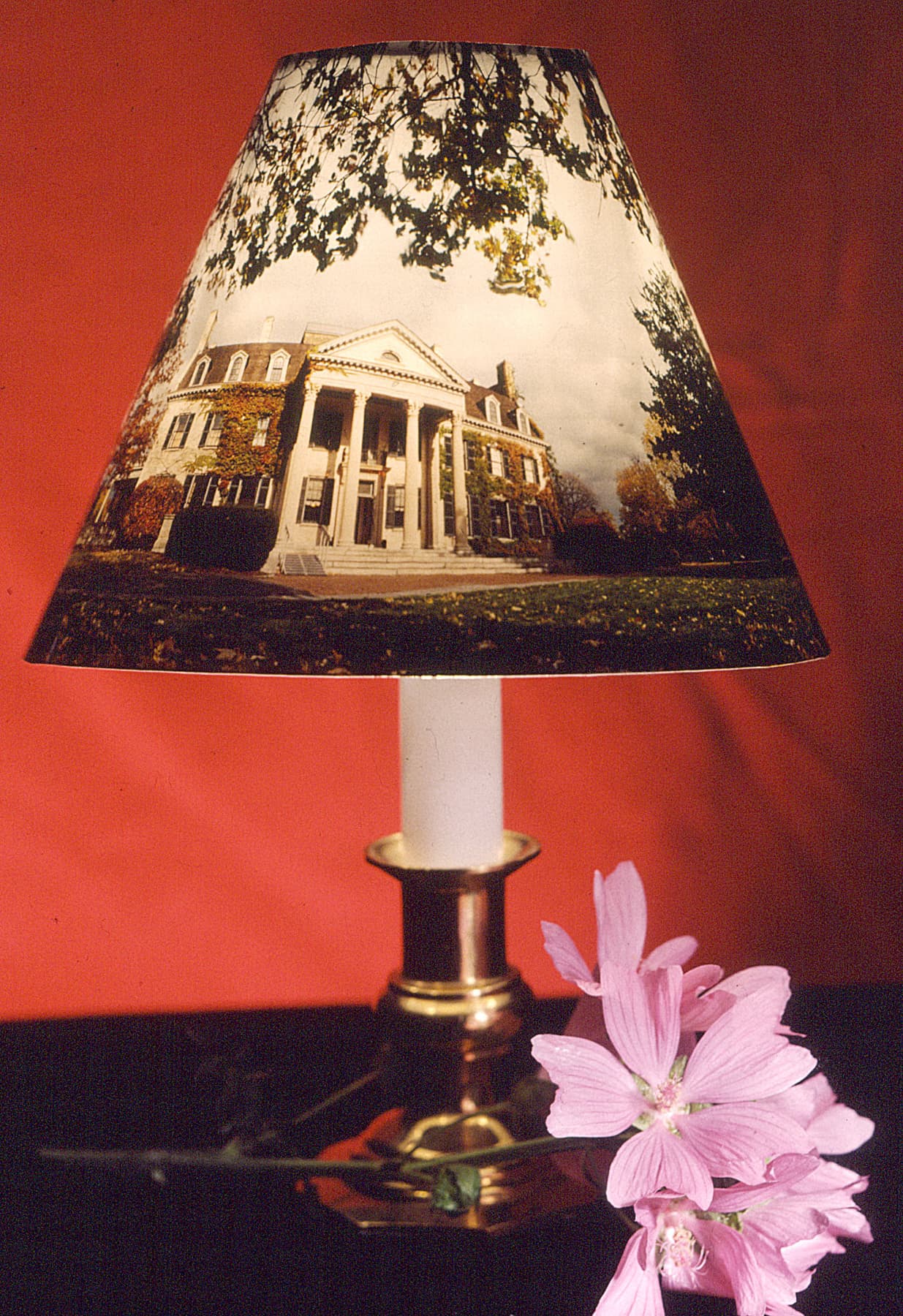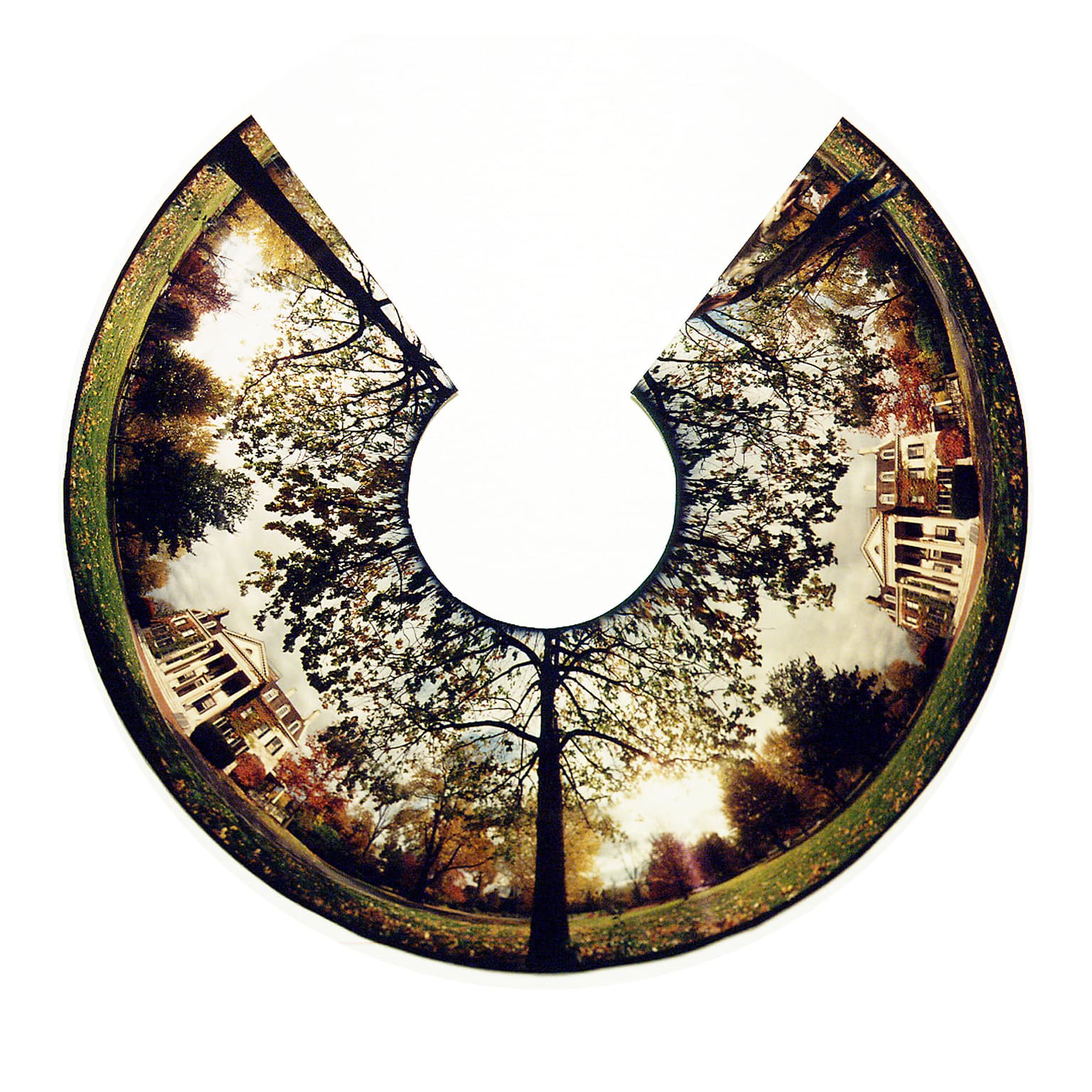2012 Joint Mathematics Meetings
Andrew Davidhazy
Artists
Andrew Davidhazy
Professor (retired)
Honeoye Falls, New York, USA
Statement
My area of interest is the application of mathematical concepts in technical applications of photography. Be it quantification of phenomena or the design and use of photography to visualize physical and mathematical concepts. I am entering two versions of this image. One is a 2D representation of a more than 360 degree panoramic view of the ground of the George Eastman House recorded on film (not computer adjusted) with a camera I designed and constructed to make conical projections or representations with a tilted panoramic camera. The other is the 3D version of the lampshade generated from a single 360 degree turn of the camera. The segment of the circular film that was exposed is related to the tip angle of the camera and the side angle of the resulting cone. The concept and working principles are described in an article available on line at: http://www.davidhazy.org/andpph/text-conical-panoramic.html and in more mathematical detail at: http://www.davidhazy.org/andpph/text-conical-strip.html Andrew Davidhazy
Artworks

Conical lampshade based on a 360 degree view of the George Eatman House grounds
About 14 inches tall by about 8 inches in diameter.
Photograph on Duratrans material
circa 1990 but not positive

Conical Panoramic view of the George Eatman House grounds
16 x 16 inches
photograph
circa 1990 but not positive